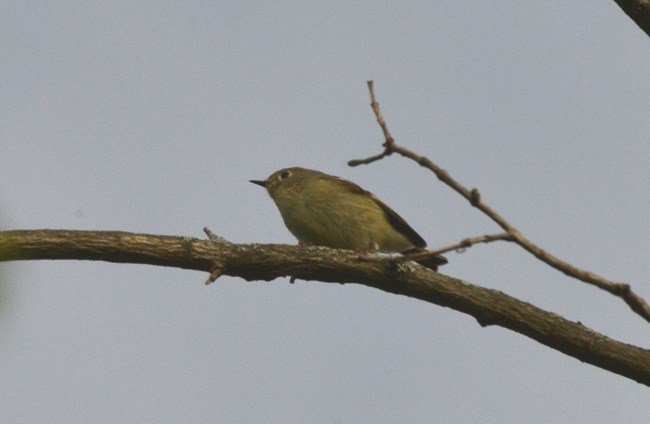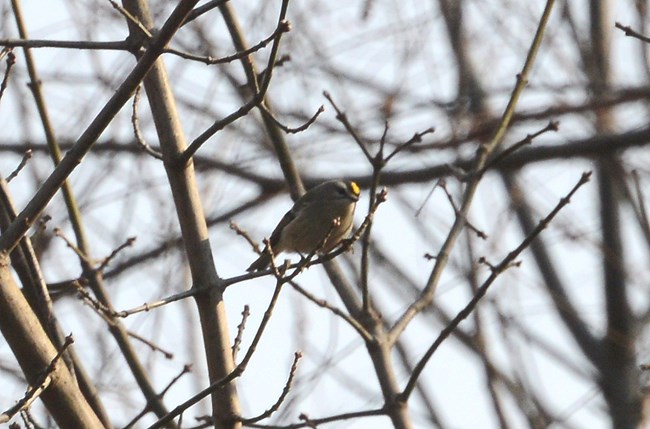|
NPS.gov / Park Home / Learn About the Park / Nature / Animals / Birds / Perching Birds
Kinglets or little kings were given their names because of the bold crowns they sometimes display. Kinglets are tiny and very active songbirds that have short beaks. They usually have olive/dark green feathers with a colorful crest at the top of their head. You won't see their crest/crown unless they display it.

© Bill Telfair Ruby-crowned Kinglet (Regulus calendula)• There have been metabolic studies on Ruby-crowned Kinglets that suggest that they only use about 10 calories per day.• Though they are small birds, Ruby-crowned Kinglets lay a very large clutch of up to 12 eggs in a single nest. • Singing is much more energy efficient and less dangerous than fighting so Ruby-crowned Kinglets use their loud songs to establish territories. • Ruby-crowned Kinglets love to eat spiders, pseudoscorpions, and many types of insects like wasps, ants, and bark beetles. Identification Information• Size: Sparrow sized of smaller (Small)• Color: Ruby-crowned Kinglets are olive-green with a white eyering and a white stripe on its wings. The white stripe on its wings is in contrast to the blackish color surrounding it. The ruby-crown of the males is usually concealed -- they may flash the red crown when excited. 
© Bill Telfair Golden-crowned Kinglet (Regulus satrapa)• Each of the Golden-crowned Kinglet’s nostrils is covered by a single, tiny feather.• After males establish a territory, they protect that territory by chasing after male intruders, making frantic chirps, and by raising/flaring their yellowish/orange crown patch atop their heads. • Golden-crowned Kinglets love to eat insects. During the breeding season they like to eat grasshoppers, crickets, lice, bugs, lacewings, beetles, moths, flies, bees, and more. In the winter, they like to eat seeds and look for food in brush piles and small trees. • They like to pick nesting spots up to 60 feet above the ground at the top of conifer (cone-bearing seed plants) trees. Their nests are generally placed close to the trunk and are protected from the elements by overhanging tree needles. Identification Information• Size: Sparrow sized or smaller (Extra Small/Small)• Color: Golden-crowned Kinglets are greenish/yellow on their backs and wings and a muted gray on their necks and bellies. They have a black and white striped face with a bright yellowish/orange crown atop their heads. They also have a thin white line on their wings and yellow edges on their feathers as well.
All of the above information is an abbreviated version of information gathered from the Cornell Lab of Ornithology. Please visit their website for more in-depth bird information.
|
Last updated: September 16, 2019
